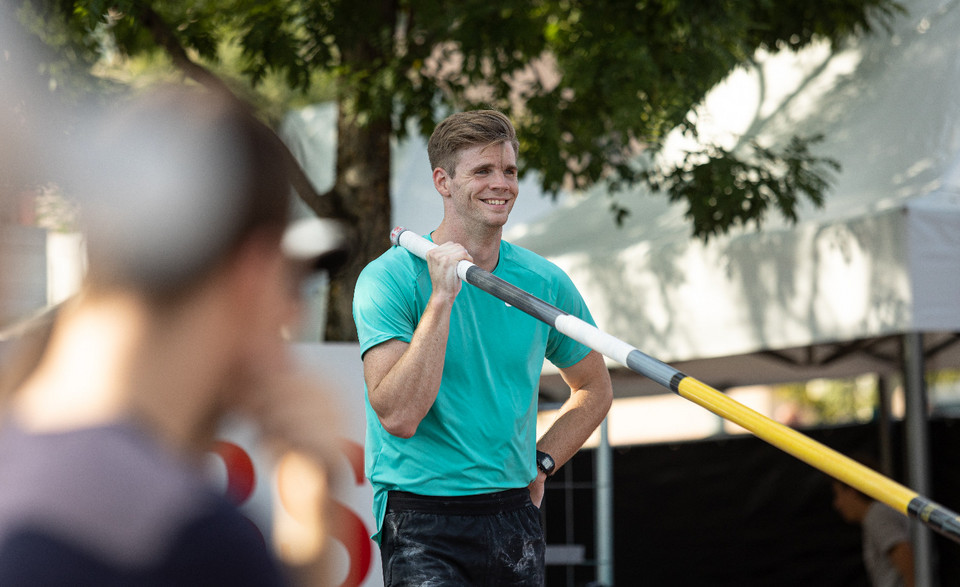Do you have to be crazy to jump five or six metres in the air on a bendy pole? Sometimes, it is a very fine margin between madness and genius, and pole vaulters know better than anyone about fine margins.
The USA's Chris Nilsen has been one of the standout stars in the men's pole vault in recent years, and one of the few who has managed to beat Olympic champion and serial world record breaker Mondo Duplantis.
So who better to talk us through his pole vault technique, offering an inside view into how to master the most technical of technical disciplines?
He breaks the pole vault down into three main components: the run-up, the take-off and the vault.
At the top of the run-up, Nilsen ensures that he has the perfect grip on the pole, which can measure anything from three to more than five metres.
"The pressure is in the right hand, while your left hand is more of a guide," says the American, who is right-handed "like most of the pole vault community".
The pole is carried at full speed down the forty-metre runway, where it is planted firmly into the metal box at the foot of the bed. "The goal of the run is to progressively build speed. I like to have a slow methodical start," says Nilsen.
Once planted in the box, the pole will initially bend, before springing back and catapulting the athlete high into the air. "As the pole starts to unbend, you will start to swing completely upside down, feet up and head down."
This is the business end of the vault, where it is all about propelling yourself over the bar. With a personal best like Nilsen's of 6.05m, that means twisting like a salmon at a height which most people could only ever dream of jumping.
It's a dangerous business, and vaulters are known for being a tighter-knit group of rivals than most in track and field.
"Everyone has their own way of doing things, but at the end of the day, we all love each other and we all have a good time out here," says Nilsen.






